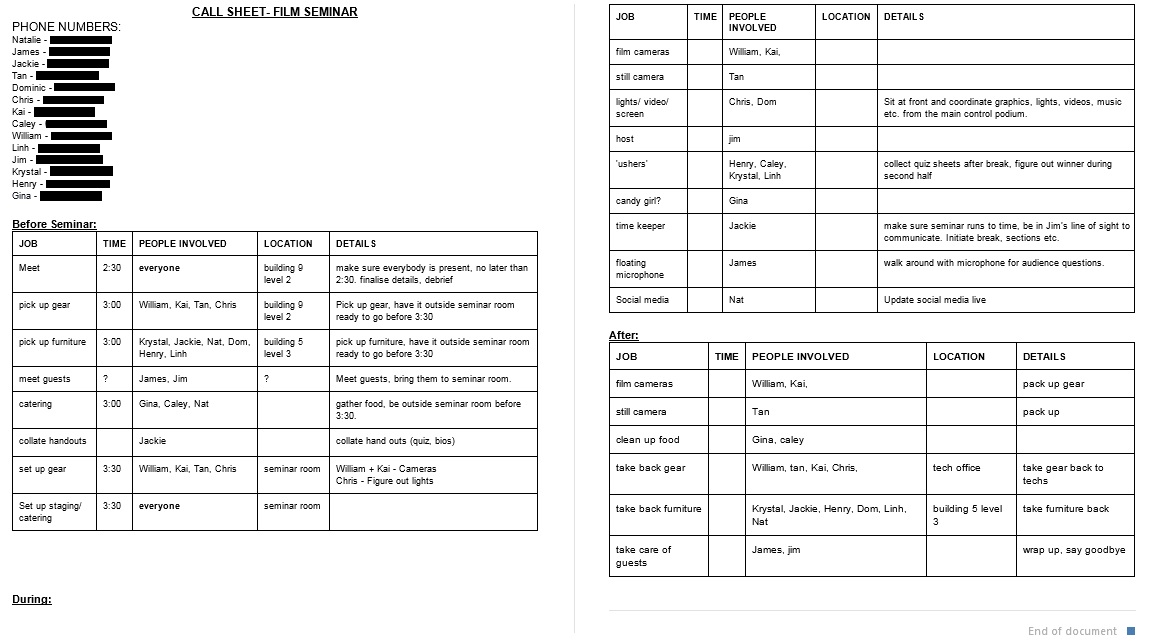The Music Of My 2015
As a uni student with an hour long commute to and from RMIT, I had a lot of time to listen to music. And although I have since graduated, it has become something of a tradition to blog about the music that defined my year. I’ve reflected on it for my other years at uni so why not the last one?
I knew 2015 would be a great year. Call it intuition, superstition, or a self fulfilling prophecy, but long before the year began, when we were still in early 2014, i knew 2015 would be great. And It didn’t dissapoint. This year i finished uni on a high, aced my classes, made tons of new and wonderful friendships, took huge strides personally and professionally, and am just in a really happy place. I turned 21 and had a fabulous party, with a fabulous playlist, and just as the year has been good to me, so has the music in my rotation. Without further ado, my top 10 experience defining songs of 2015 (in order of when I listened to them in the year.)
1. ‘Way Down feat. RZA, Barbie, John Frusciante’- N.A.S.A
2. ‘Rainbow’- F(x)
These two songs remind me of the beeginning of the year. In december 2014 i fell in love with the Red Light album, and its continued all this year as well. Going back to uni, doing a painting class as an elective, making films about old buildings, uni excursions; it all comes back to be when i listen to these two songs. I was determined to be on top of things at this time, I went to the recomended galleries and exhibitions from my tutors, I did the extra work, I was on top of it, and listening to these two songs the entire time.
3. ‘We Are Bulletproof pt. 2’- BTS
4. ‘Let Me Know’- BTS
Both of these songs not only signify the BTS concert around this time, but I had just recieved their discography off a friend and was listening to their songs constantly. These two stand out to me as defining this time. I remember this was the beginnning of semester 2, I had started Spanish as an elective and would listen to these songs in the morning before class. I would also listen to them as i walked around melbourne and the city during my breaks. It reminds me of mornings, cold, and light rain, but I also fondly remember listening to Bulletproof just before all of my Spanish tests to pump up my confidence. I guess it payed off?
5. ‘Strange Enough feat. Karen O’, Ol’ Dirty Bastard, Fat Lip’- N.A.S.A
6. ‘Flashing Lights feat Dwele’- Kanye West
These remind me of a similar time to the last two entries, I have similar memories associated with them. Trying to fill up my annoyingly long, 3.5 hour breaks between classes at uni, and specifically, Strange Enough reminds me of walking in really heavy gross rain. As well as crappy group projects… Together these songs remind me of long solitary walks with my ipod and a warm coat on in the evenings. Dull weather, but great music. It was also around this time I celebrated my 21st. I also give an honorable mention to ‘Make it Real’- BABE. Only just missed the cut but was pretty iconic of this year and this time of my life.
7. ‘Airplane’- F(x)
8. ‘Perfect’- The Smashing Pumpkins
Post birthday, My playlist was a bit more chill, to match the weather easing up, and just the general feeling of the time of semester. These songs were iconic of my spring. Getting to the end of the semester, only going in for assignments and presentations. I went back to a couple of old albums around this time and just chilled out. I was a bit over uni work, I had kept on top of it all year, I had put in the hard work and just needed to finish it off.
9. ‘Surrender’- Gavin Turek
10. ‘Automatic’- Red Velvet
These two songs not only wrapped up my year, being on holidays, graduating, selling our house, all the purchases I made; they also give a good indication of where my music taste is at the moment. For the majority of the year I’ve been gravitating to a sort of mature sound, and then indulging in my other bangers and pop occasionally for fun. I feel like this has really reflected in my attitude as well, and it brings me to where I am now. I still enjoy all the bands I did before, but I never indulged in this sound before past Late Night Alumni, who are still one of my favourite bands and could honestly be on every years list if it wasn’t redundant.
Who knows what 2016 will bring. I dont have a good feeling about it like I did this year, but ill put on my brave face anyway and give it my best shot. I look forward to hearing the music it brings.


